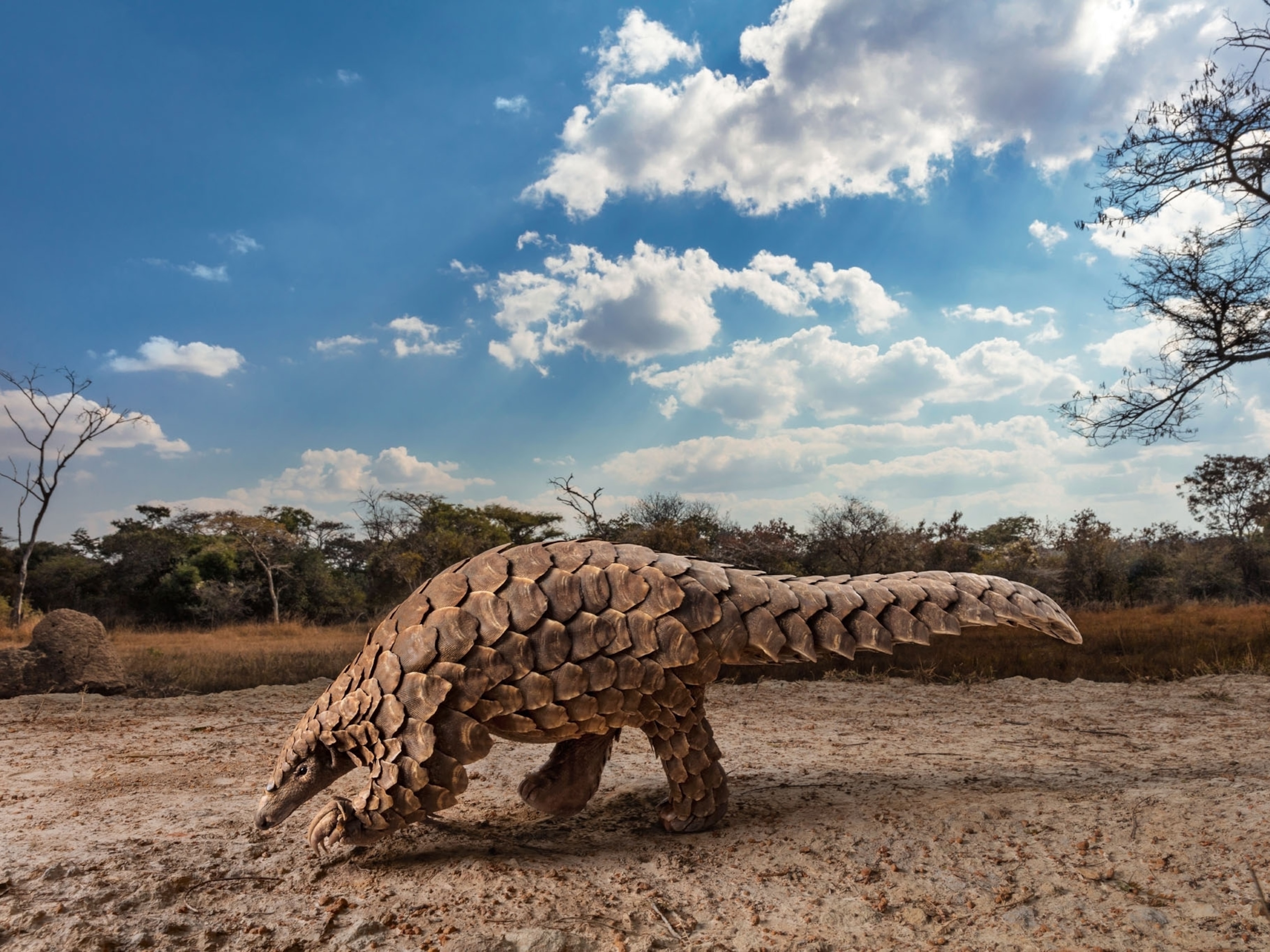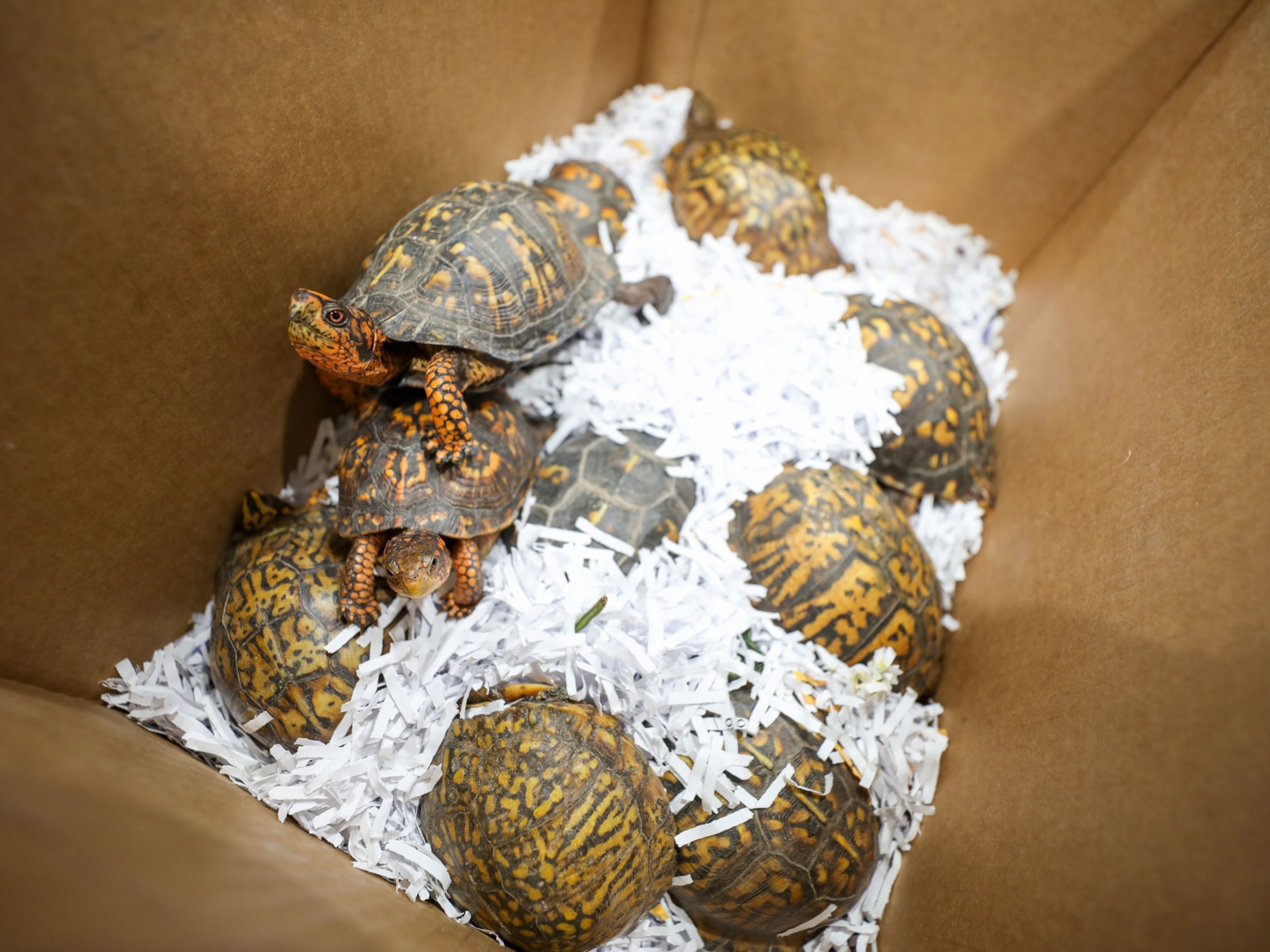Pangolin scales are not a party drug, say researchers
Rumors about the protective armor of the threatened mammal are debunked, as poaching decimates their numbers.
The National Fish and Wildlife Forensics Laboratory, in Ashland, Oregon, is the first such facility in the world dedicated to animals—describing itself as “much like a ‘typical’ police lab except the victim is an animal.”
At the lab, forensics experts work to determine the cause of death of animals, to identify the species or subspecies of an animal from a small tissue sample, such as a hair or feather, and to help state, federal, and international law enforcement to determine if a wildlife crime was committed. If that determination is made, the scientists at the lab will also help gather and analyze the evidence.
Recently, four of the lab’s scientists dedicated themselves to testing a relatively new claim about pangolin scales—that they contain tramadol, an opiate used for pain relief that, like all opiates, has the potential for abuse.
Wildlife forensic scientist Rachel Jacobs and her colleagues examined the chemical signatures of clippings of scales from more than 100 pangolins and found no traces of tramadol. They published the findings in June in the journal Conservation Science and Practice.
“There’s so much misinformation surrounding this whole thing,” Jacobs says.
Spreading rumors
Pangolins, the world’s only mammals with true scales, are threatened across their ranges in Africa and Asia by poaching for the illegal wildlife trade. Their scales are in demand for traditional Chinese medicine, said to treat everything from arthritis to difficulty with lactation in mothers. Although international trade in pangolins and their parts is banned, China yearly approves the use of some 29 tons of scales—equivalent to about 73,000 pangolins—for commercial traditional medicines.
But starting around 2010, local media reports in Southeast Asia began popping up with a new assertion—that pangolin scales contained tramadol and that scales were being smuggled to the U.S. because of it.
Pangolin scales are made of nothing more than keratin, a protein that makes up fingernails, hair, horns, claws, and hooves. It has no scientifically proven medicinal value. Jacobs was doing related research when she first heard the rumors about pangolin scales being smuggled into the U.S. for tramadol. “It surprised us. We thought it was a bit bizarre,” she says. “We hadn’t heard of it before.”
The forensics team looked into it further and found even more news reports about pangolins and tramadol. They also started getting calls from law enforcement asking if there was any truth to it.
The scientists were already doing research on how to use scales to differentiate among pangolin species, so they decided to do a chemical analysis to look for the presence of tramadol. As they expected, they found none.
“This study is important because we need to have the science that debunks false claims of medicinal use, especially when endangered species are involved,” says Paul Thomson, a conservation biologist and the founder of the nonprofit Save Pangolins, who was not involved in the research.
Stopping demand
Jacobs’ hope is that debunking this myth will stop the spread of demand for pangolin scales as a recreational drug and analgesic. It’s not known how much this false belief has played into demand for pangolin scales, but given how exploited the animals already were, everything should be done to avoid adding to that pressure, she says.
Reducing demand for illegal wildlife products such as elephant ivory, rhino horn, and pangolin scales is an art that conservationists are still trying to figure out. Changing consumers’ behavior is hard to do, and it’s hard to measure, but Jacobs has hope for stamping out the tramadol fallacy.
Unlike traditional Chinese medicine, which has existed for thousands of years and is deeply rooted in historical and cultural beliefs, this notion emerged recently and seemingly out of nowhere. As such, Jacobs says, it “might not have that kind of same history attached to it that can make it difficult to change.”
“Younger, more educated people will be more influenced by [this] science- and evidence-based approach,” says Sue Lieberman, the vice president of international policy at the Bronx-based nonprofit Wildlife Conservation Society—as opposed to older consumers whose entrenched beliefs about traditional medicine are stronger.
Promoting alternatives is one way to help people move away from using pangolin scales for pain relief. “There are many easily available medicines that reduce pain, which don’t require killing a pangolin,” Thomson says.
Learn more about the science behind this study and see inside the wildlife forensics lab in the video above.





